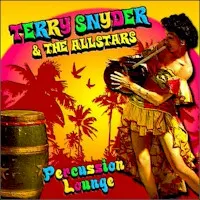Bitrate: MP3@320K/s
Time: 57:23
Size: 131.4 MB
Styles: Bop, Soul-Jazz
Year: 1991/2008
Art: Front
[6:16] 1. Autumn Leaves
[9:10] 2. Blues Everywhere
[8:41] 3. Oasis
[9:16] 4. Embraceable You
[8:55] 5. Triste
[8:58] 6. 'round Midnight
[6:04] 7. The Theme
Recent trio session with Scott and Arthur Harper (b) and Mickey Roker (d). The twist is that Scott is playing acoustic piano throughout. It's not the usual sound, but she can play that thing. ~Michael Erlewine
Shirley Scott is equally at home on organ or piano, but her pianist talent was unknown for many years, such was her popularity as one of the most original of jazz organists. This live Candid set, originally released in 1991, marks her debut as a leader of a piano trio and finds her with Arthur Harper on bass and Mickey Roker on drums. The love, care and experience of the threesome is evident in the spontaneous feel that abounds and in the thoughtfully attractive arrangements. Trios don't come much more hip than this one.
Shirley Scott is equally at home on organ or piano, but her pianist talent was unknown for many years, such was her popularity as one of the most original of jazz organists. This live Candid set, originally released in 1991, marks her debut as a leader of a piano trio and finds her with Arthur Harper on bass and Mickey Roker on drums. The love, care and experience of the threesome is evident in the spontaneous feel that abounds and in the thoughtfully attractive arrangements. Trios don't come much more hip than this one.
Blues Everywhere











